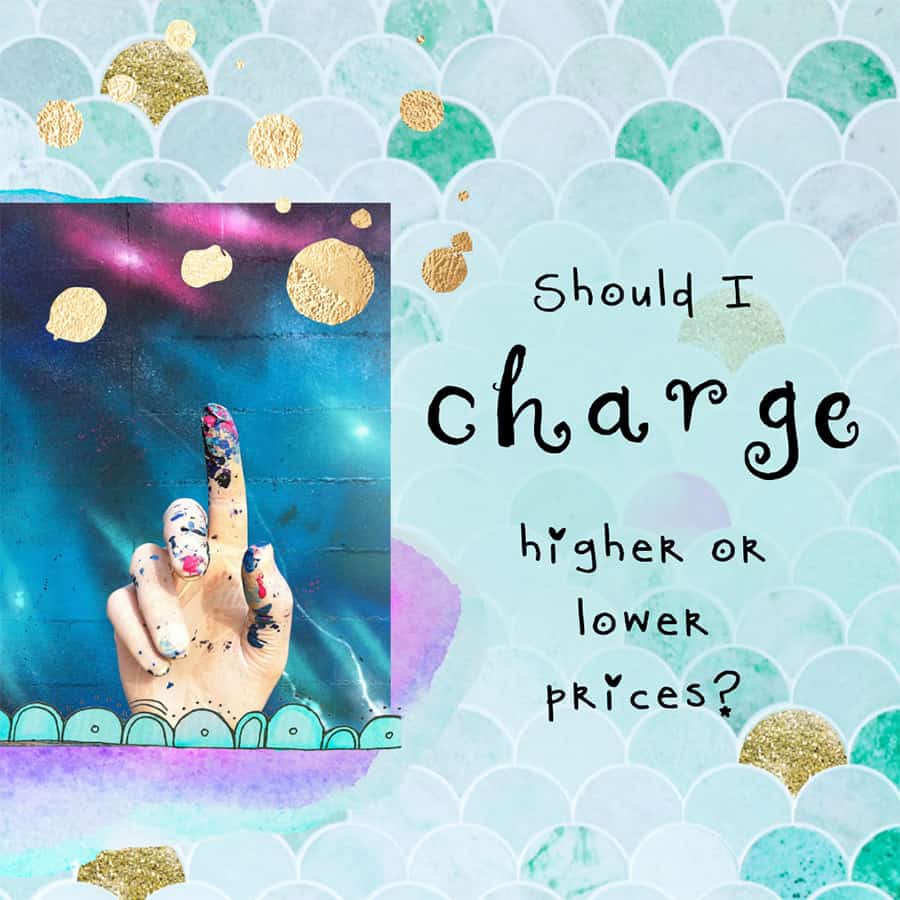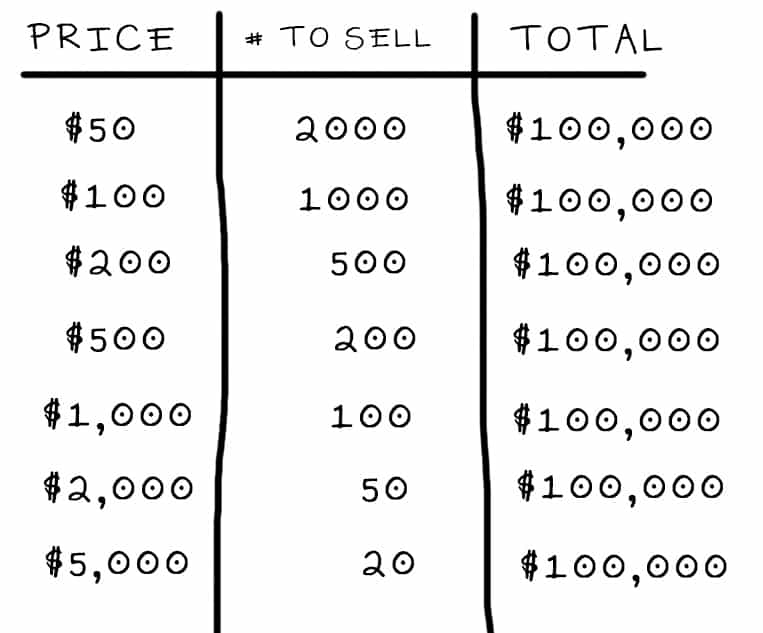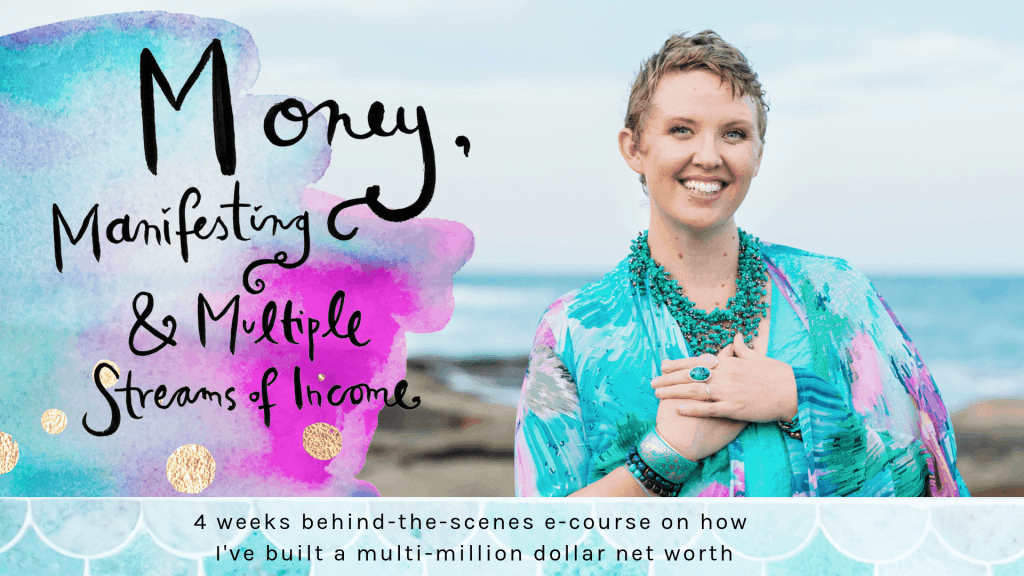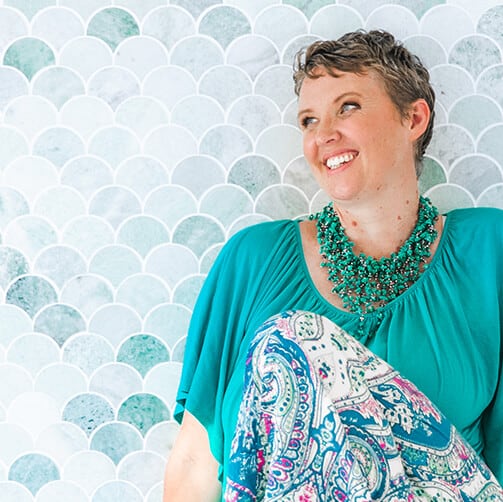
Possums!
Let’s talk about pricing – I know it’s something that can cause a lot of angst for business owners.
Specifically – should you charge low or high prices for your offering? And what’s the pros, cons and reasons for both?
Most important thing about pricing though is:
There is no “better” way to do pricing. There is no right answer here. Higher or lower pricing doesn’t mean you are greedier, selfish, more pious, or any other ridiculous judgment.
Pricing is simply a function of your business model. You get to try out what works for you and your target market. And that may change over time.
Your pricing is also not necessarily an indication of your self worth, how you value yourself or your services, or your money blocks. (It can be, of course, if you’re not aware of them and actively working on them!)
I remember a great pricing conversation I had with an entrepreneur friend a few years ago. We’ve both built 7 figure companies mostly by teaching courses online. She loved being able to charge a really high amount and only having to find and serve a few customers. I, on the other hand, tend to charge lower prices for my courses because I prefer reaching more people. Both worked as business models in the exact same industry, both had rabid fans as customers and both were financially successfully. Pricing was based purely off our personal wishes, and that is perfect!
What are the pros + cons of pricing lower?
Pros:
- It is more affordable to a larger range of people
- You can work less hard to make the sale (you still need to work though!)
Cons:
- It can be a smaller profit margin
- If you’re ONLY competing on price, a competitor can always take your customers
- Can sometimes be seen as lower quality
- Lower-cost customers can in some industries be more difficult (for example: in the wedding photography industry, couples looking for the cheapest photographers are often the most work).
What are the pros + cons of pricing higher?
Pros:
- Increased profit margins
- You can sell to and look after less people
- Your customers are choosing you for your unique offering, not because they are price-shopping
- Can sometimes be seen as higher quality
Cons:
- You will need to upgrade your sales and marketing to ensure you address pain points, benefits and results
- You will need to upgrade your branding to attract your more affluent target market.
Who is your target market?
In all our talk of pros and cons about pricing structure, try to think about your target market as well. Your target market can change over time… but think about the people you help right now. Do they tend to invest in lower or higher priced offerings? Think about the people you want to help in the future. Lower or higher priced?
Are you trying to sell Lexus cars to a Toyota family? Are you trying to sell Toyotas to a Lexus couple?
Feeling energetically aligned with your price
I think the most important thing when it comes to pricing is how YOU feel about your prices.
- Do you feel like a fraud and you are charging too much?
- Do you feel like you are charging too little and are resentful?
- Do you feel great and confident about them?
If you’re not aligned with your price, it can result in less sales. I know I have to feel great about my pricing to be able to confidently talk about my offerings.
Some great peeps who help with price alignment are Kerry Rowett + Denise Duffield-Thomas.
Another way to decide on your pricing
Maybe thinking about your target market, and pricing structure pros and cons isn’t working for you. Here’s a different method for working out your pricing.
Work out your overall goal for income (this could be for the month or year).
Then start playing with how you could reach that income.
For example:
Say your goal for the year is to make $100,000.
You can brainstorm different pricing options for your offering, and see how much you would need to sell at each price to make that amount.

Fascinating, right?
So many ways to make money at all different amounts!
Create one for your offerings and your goal.
Then see which one feels more doable to you… then do it!
How I choose pricing for my business
For me, I’ve experimented with high and low end pricing.
At the lower end, my digital editions of my yearly goals workbooks are only around $10.
At the higher end of the pricing spectrum, I’ve also charged up to $8,000 for 1:1 coaching packages in the past.
Both are totally fine, and perfect for me at different times.
On average though, my e-courses tend to sit around the lower price range (just under $100).
I’ve experimented and explored, and for me, lower price range is a happy, easy fit for me. I prefer selling courses to 1,000 people at a lower price, instead of less people at a higher price. I want to be an affordable option for people, so that if they do want to learn from me, it’s within their buying capacity.
This doesn’t mean I’m a better person than someone who charges higher prices, nor does it mean someone with higher prices teaches more than I do. It’s just a matter of what *I* like to do with my business.
I have bunches of friends who charge 20x what I do for courses… and I love them and love their offerings!
Again – there’s no wrong way… just what is right for YOU.
Final pricing thoughts from me…
- You can always test your prices and see what works better.
- Try not to compete to be the lowest price possible… lower is fine, but lowest means you may lose out when a newer, cheaper competitor appears.
- Make sure you keep an eye on your profit margins… profit is the reigning queen!
- You can change your mind later!
- Just fucking do the thing, and stop worrying too much about pricing!
Big love,













